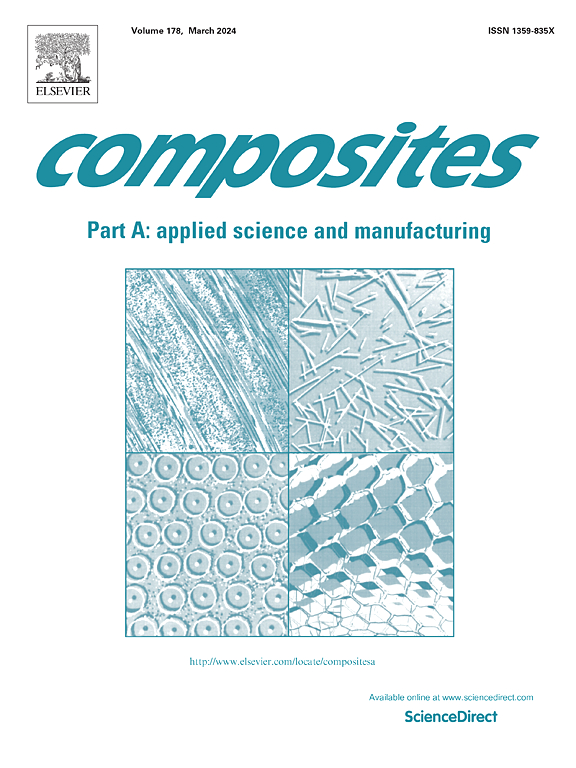Mechanical role of graphene nanofiller on vibration damping properties of highly cross-linked polymers
IF 8.1
2区 材料科学
Q1 ENGINEERING, MANUFACTURING
Composites Part A: Applied Science and Manufacturing
Pub Date : 2025-01-11
DOI:10.1016/j.compositesa.2025.108720
引用次数: 0
Abstract
This study investigates the effect of graphene incorporation into epoxy on its microstructure and energy dissipation properties under vibration loading. Using all-atom molecular dynamics simulations, the load-carrying and energy dissipation capabilities of graphene/epoxy nanocomposite models were successfully quantified at the nanoscale. Oscillatory shear deformation analysis revealed that graphene enhances the interfacial energy dissipation under out-of-plane loading, which significantly improves the damping performance of the nanocomposites. However, a detailed spatial analysis of the matrix domain revealed that the interphase around graphene is inferior to that of the bulk matrix in both load-carrying and energy-dissipation capabilities, which is attributed to the locally elevated cross-linking density at the interphase and insufficient interfacial interactions. This encapsulated interphase structure causes a simultaneous increase in deformability and elasticity under external shear strain. The study findings underscore the necessity of optimizing the interfacial structure for developing graphene/epoxy nanocomposites with superior passive vibration damping properties.

求助全文
约1分钟内获得全文
求助全文
来源期刊

Composites Part A: Applied Science and Manufacturing
工程技术-材料科学:复合
CiteScore
15.20
自引率
5.70%
发文量
492
审稿时长
30 days
期刊介绍:
Composites Part A: Applied Science and Manufacturing is a comprehensive journal that publishes original research papers, review articles, case studies, short communications, and letters covering various aspects of composite materials science and technology. This includes fibrous and particulate reinforcements in polymeric, metallic, and ceramic matrices, as well as 'natural' composites like wood and biological materials. The journal addresses topics such as properties, design, and manufacture of reinforcing fibers and particles, novel architectures and concepts, multifunctional composites, advancements in fabrication and processing, manufacturing science, process modeling, experimental mechanics, microstructural characterization, interfaces, prediction and measurement of mechanical, physical, and chemical behavior, and performance in service. Additionally, articles on economic and commercial aspects, design, and case studies are welcomed. All submissions undergo rigorous peer review to ensure they contribute significantly and innovatively, maintaining high standards for content and presentation. The editorial team aims to expedite the review process for prompt publication.
 求助内容:
求助内容: 应助结果提醒方式:
应助结果提醒方式:


